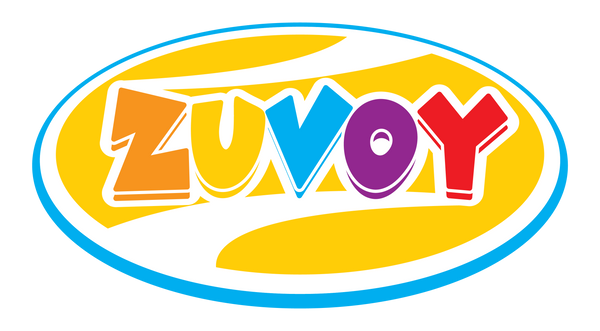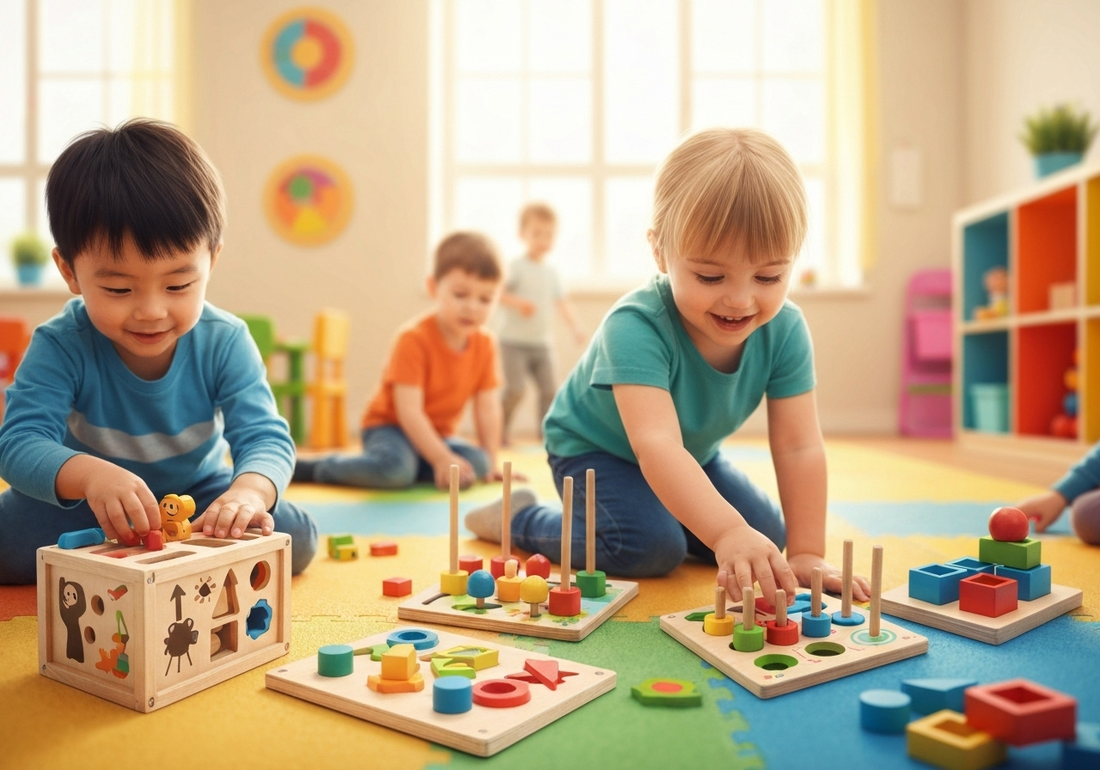Key Highlights
- Wooden toys provide a classic and durable option for play, fostering crucial developmental skills.
- The act of sorting helps children build early cognitive abilities, including problem-solving and memory.
- Playing with these toys significantly improves fine motor skills, dexterity, and hand-eye coordination.
- Choosing wooden toys promotes sustainability, especially when they are made from responsibly sourced materials.
- Many high-quality wooden sorting toys are available from retailers in Canada, offering eco-friendly choices.
- These toys lay the foundation for understanding concepts like colour, shape, and size relationships.
Introduction
Are you looking for a toy that is both entertaining and beneficial for your child's growth? Wooden toys have long been a staple in playrooms for their simplicity and durability. Beyond just being fun, they play a crucial role in early child development. The simple act of sorting, in particular, offers a wealth of benefits that support cognitive and motor learning. This guide explores how incorporating wooden sorting toys into your child's playtime can help build foundational skills for a lifetime of learning.
Understanding Sorting Wooden Toys in Early Childhood

Wooden toys designed for sorting capture a child's attention with their tactile feel and simple mechanics. For toddlers, these toys transform abstract concepts like color and shape into tangible experiences. A vibrant rainbow stacker, for example, isn't just a toy; it's a hands-on lesson in size and sequence.
This form of play is essential for building a child’s ability to recognize patterns and categorize information. To better appreciate their impact, it is helpful to understand what these toys are and how they differ from similar developmental toys like stacking and nesting sets.
What Are Sorting Wooden Toys?
Sorting wooden toys are playthings designed to teach children how to group objects based on shared characteristics. These attributes can include color, shape, size, or type. A classic example is a shape sorter, where toddlers must match a block to its corresponding hole. This activity encourages them to observe, compare, and make decisions.
The skills developed through this play are fundamental. When your child engages with sorting toys, they are practicing categorization, a key aspect of logical thinking and a precursor to mathematical concepts. They learn to identify patterns and create order from a collection of different items, such as separating wooden building blocks by their colour or shape.
For toddlers, this is more than a game; it is a foundational exercise in organization and critical thinking. The process of picking up a piece, examining it, and placing it in the correct group also refines fine motor skills and boosts their confidence as they successfully complete the task.
Difference Between Stacking, Sorting, and Nesting Toys
While often grouped, stacking, sorting, and nesting toys each promote different primary skills. Understanding their unique functions can help you choose the best toy for your child's developmental needs. Stacking focuses on balance, sorting on logic, and nesting on spatial relationships.
Stacking involves placing items on top of one another, like the rings of a rainbow tower. Sorting requires grouping items by an attribute, such as separating pieces by colour. Nesting is the act of fitting smaller objects into larger ones. Each action challenges a child in a distinct and valuable way.
This table highlights the core differences between these toy types:
|
Toy Type |
Primary Action |
Key Skill Developed |
Example |
|---|---|---|---|
|
Stacking |
Placing items on top of each other |
Balance, hand-eye coordination |
Rainbow ring stacker, building blocks |
|
Sorting |
Grouping items by a shared attribute |
Logic, classification, problem-solving |
Shape sorter box, colour-matching puzzles |
|
Nesting |
Fitting items inside one another |
Spatial awareness, size discrimination |
Nesting cups, Russian dolls |
Cognitive Benefits of Sorting Wooden Toys

The cognitive advantages of playing with wooden sorting toys are significant. These toys are powerful tools for building the neural pathways responsible for logical reasoning. As children figure out where each piece goes, they are actively engaging in problem-solving and exercising their critical thinking skills.
This focused play also strengthens a child’s memory and ability to concentrate. The following sections will explore how these simple wooden toys support complex mental processes and lay the groundwork for future academic success.
Enhancing Problem-Solving and Critical Thinking
How do simple wooden toys teach something as complex as problem-solving? The process is intuitive and child-led. When a child attempts to fit a square piece into a triangular hole and fails, they are met with immediate feedback. This encourages them to stop, reassess the situation, and try a new approach—the very essence of critical thinking.
This trial-and-error learning is incredibly valuable. It teaches resilience and shows children how to work through challenges independently. Toys from brands like Grimm's are designed to encourage this open-ended exploration, where the goal is not just completion but also discovery. The child isn't just matching shapes; they are learning how to analyze a problem and test different solutions.
Through this hands-on experimentation, children develop a systematic way of thinking. They learn to predict outcomes based on their actions, a skill that is essential for both academic and real-world situations. This active engagement makes learning feel like play, not a chore.
Improving Memory and Concentration in Children
Sorting wooden toys are excellent for improving a child's memory and concentration. The nature of the task requires focus; a child must remember the attribute they are sorting by—be it color, shape, or size—and apply that rule to each piece. This sustained attention helps lengthen their concentration span over time.
As children engage with these toys, they are also exercising their working memory. For instance, they might need to remember which shapes they have already tried in a particular slot or recall the sequence of colors in a pattern. This mental exercise strengthens their ability to hold and manipulate information, which is crucial for learning.
This focused play offers a calm and engaging activity that minimizes distractions. The simple, clear objective of a sorting toy helps a child block out external noise and concentrate on the task at hand. This practice in mindfulness and focus not only boosts dexterity but also builds patience and persistence.
Motor Skill Development Through Sorting Wooden Toys
Beyond cognitive growth, sorting wooden toys are instrumental in developing motor skills. The physical act of picking up, holding, turning, and placing objects is a workout for a child's hands and fingers. This hands-on interaction is essential for building strength and precision.
These activities directly support the refinement of fine motor skills, dexterity, and hand-eye coordination. We will now look closer at how manipulating these wooden toys helps your child master the physical movements necessary for writing, drawing, and other everyday tasks.
Supporting Fine Motor Coordination
Fine motor skills involve the use of the small muscles in the hands and wrists. Sorting toys, like wooden building blocks, require children to use a pincer grasp to pick up objects, rotate their wrists to orient them correctly, and place them with precision. According to experts at Verywell Family, developing these skills is crucial for tasks like writing and using utensils. [1]
Each successful placement of a block reinforces this coordination. The tactile nature of wood, especially from FSC-certified forestry sources, provides sensory input that further enhances the experience. The weight and texture of the pieces give a child’s hands more information to work with, helping them refine their movements.
This practice is foundational for future independence. The coordination and muscle control gained from playing with sorting toys directly translate into a child’s ability to button a shirt, tie their shoelaces, and hold a pencil correctly, setting them up for success in preschool and beyond.
Boosting Hand-Eye Coordination and Spatial Awareness
Hand-eye coordination is the ability of the eyes to guide the hands in movement, and it is a skill that gets a great workout with sorting toys. When your child sees a specific slot and directs their hand to place the corresponding shape into it, they are actively practicing this connection. The brain, eyes, and hands must work together seamlessly to achieve the goal.
Similarly, these toys are excellent for developing spatial awareness. This skill involves understanding where your body is in relation to other objects and how objects relate to one another. Through stacking and sorting, children learn about concepts like "on top of," "inside," and "next to." They begin to grasp how different shapes and sizes fit together.
Whether they are sorting by colour or shape, children are constantly making judgments about distance, position, and orientation. This hands-on learning helps them build a mental map of their physical world, improving their ability to navigate their environment and manipulate objects within it effectively.
Conclusion
In summary, sorting wooden toys offer a wealth of benefits for child development, making them an essential addition to any child's playtime. These toys not only enhance cognitive abilities by promoting problem-solving and improving memory, but they also support the development of fine motor skills and coordination. Moreover, engaging with these toys helps children understand spatial relationships and boosts their creativity. As parents and caregivers, prioritizing playtime with sorting wooden toys can significantly contribute to your child's growth and learning. If you want to explore the best options for your child, get in touch with us for a free consultation!
Frequently Asked Questions
Are wooden sorting toys safer and more eco-friendly than plastic options?
Yes, wooden toys are often safer as they are less likely to break into small, sharp pieces. For sustainability, look for options made from FSC-certified wood, which guarantees responsible forestry practices. Many eco-friendly brands are available on retailers like Amazon.
How do I choose the right sorting toy for my child’s age and stage?
Consider your child's developmental stage. For younger toddlers, choose wooden toys with large pieces and simple shapes. As they grow, introduce more complex sorters with varied shapes or multiple attributes like color and size. Retailers like Amazon allow you to filter by age.
Are sorting wooden toys suitable and beneficial for both boys and girls?
Absolutely. The developmental benefits of sorting wooden toys are universal and not specific to any gender. These toys help all children build foundational cognitive and motor skills that are crucial for their growth, making them an excellent choice for both boys and girls.

